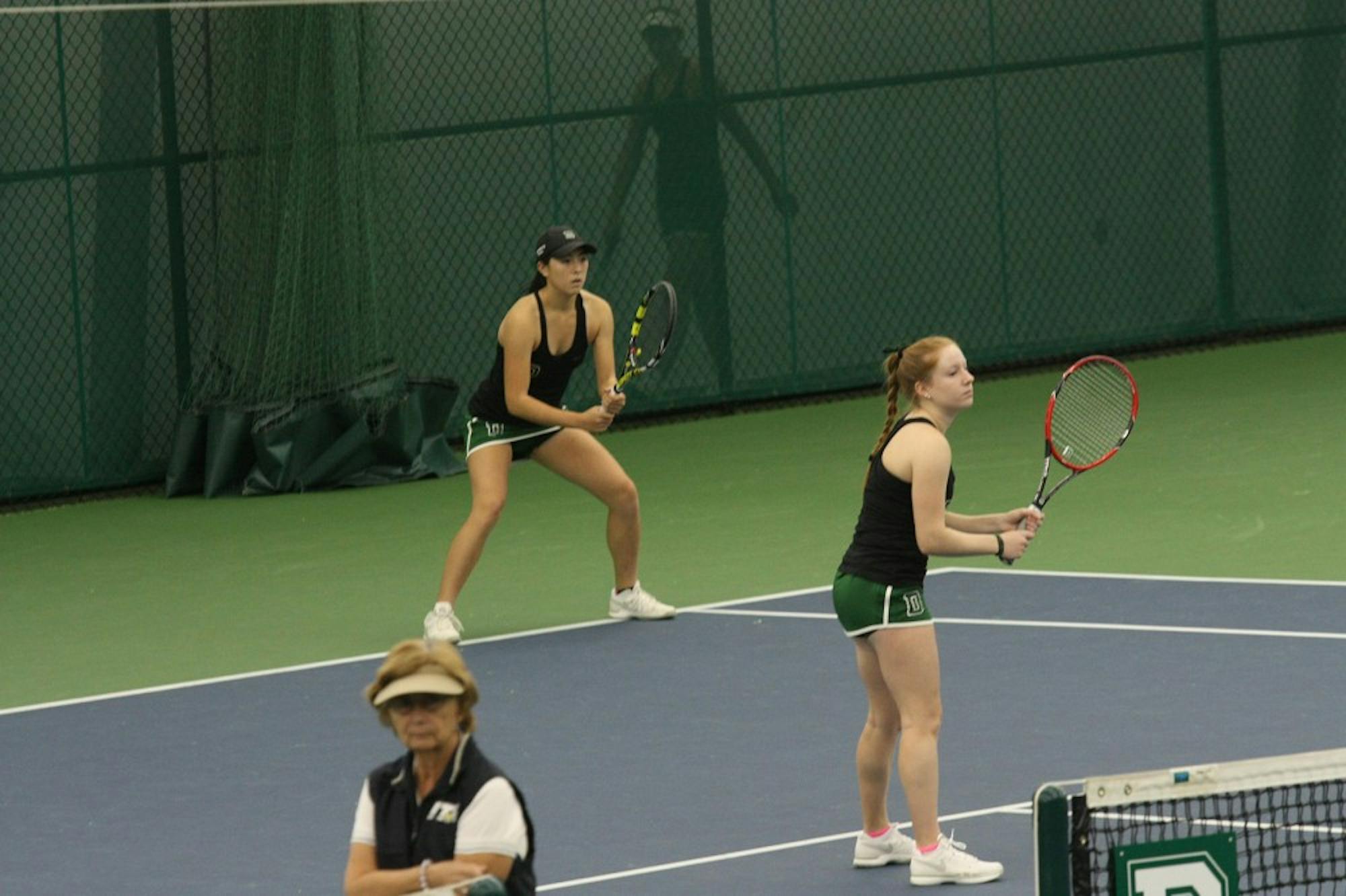This is the second part to an article entitled "For the love the game," which originally ran on October 31, 2016.
Athlete retention can vary greatly across sports, with some teams posting consistently high retention rates while others lag behind. Beyond injuries and burnout, academic and professional priorities in addition to team culture help determine how many students stick with a team for all four years.
The women’s tennis team continually boasts strong retention rates. In a prior analysis, the team experienced no losses from members of the Class of 2016, 2017 and 2018. Head coach Bob Dallis, who has led the team for over a decade, believes the team’s retention can be attributed to the lack of injuries and the compatability of the tennis team’s structure with the Dartmouth experience.
“I know in years where I’ve had players stop playing, it revolves around injury and illness, so I do think it’s a little bit of luck,” Dallis said. “I think another piece is the experience that Dartmouth and Dartmouth tennis offers sort of goes hand in hand with what I think Dartmouth students are trying to accomplish; being able to study abroad, being able to do internships, the whole life after Dartmouth [piece].”
On the other side of the spectrum, the men’s lightweight rowing team has continually low retention rates, which senior rowers often attribute to the team’s large walk-on population.
Despite its low retention, the team seems on a positive trajectory. The Class of 2016 saw the lowest rates of all Dartmouth athletic teams but has gradually improved to retaining over half of its Class of 2018 rowers.
In response, head coach Sean Healey, who is in his fifth year at the helm of the lightweight rowing team, identified similar themes as his players did, such as the team’s walk-on population.
“I think among recruited athletes our retention rate is right on par with what you’d expect it to be,” Healy said. “Reality is if you have 30 people who are trying something new...it’s going to be a different experience compared to the recruited athlete who comes in and know what they’re getting in to.”
To make the walk-on process a bit more selective, Healey said the team holds a two-week boot camp as a way to test the athletes’ fitness abilities and to ensure those who walk-on are willing to work hard and commit to the team.
However, the net the coaches cast is still wide, he noted.
This new approach to recruiting may account for the higher retention seen in the team’s recent statistics. Healey, as well as Wyatt Allen, the men’s heavyweight head coach, were both walk-ons themselves during their first year of college. Healey cites this openness as an exciting and unique component to the sport.
While basketball and football players cannot necessarily walk on and expect to pick up the game immediately and compete at the collegiate level, “the nature of rowing is that you can have athletes walk on, pick up rowing and legitimately learn to row as a freshman in college and still get pretty far with it,” he said.
Derrick White, visiting associate history professor, provided a different look at athlete retention and sports culture at Dartmouth through looking at academic related barriers, as well as the intersectionality of race, gender and class. A former college soccer player, White also walked away from his sport while competing at the University of Maryland.
Since the Ivy League does not offer athletic scholarships, the department does not control whether students can be exempt from school due to their athletic responsibilites, he said.
White noted that Dartmouth’s academic schedule componds this difficulty.
“The academics would be hard here anytime, but I think the quarters exacerbate that,” he said. “For a student athlete, 10 weeks [of term] plus the sport often creates these kind of inflexible moments in which you are often forced to choose.”
In terms of race and culture, White also noted the conflict of culture many student-athletes experience in coming to campus.
“Black student-athletes come from a broader class range than what Dartmouth would traditionally recruit from...which is tilted in one way toward the upper class and the predominantly white,” he said. “I would argue that that can keep them on the team in some ways because compared to campus, the team feels more comfortable than that.”
For female athletes of color, additional challenges can arise. White said that the majority of women’s sports are considered “emerging sports.” While black female athletes are overrepresented in sports like track and field and basketball, White said that women’s athletics has been growing more in other sports like lacrosse, soccer, field hockey, ice hockey and volleyball.
For the athletes who join these growing sports, White said the transition can be more difficult.
“When [students of color] have come in they’re like ‘whoa...I’m dealing with Dartmouth in a place that would normally be identity reinforcing but is not necessarily that.’”
White identified two important elements that could prompt a more inclusive team culture: cohesiveness and accountability, which must extend to all players and coaches for any team.
“You don’t have to like everyone on your roster,” White said. “But you have to be able to come together.”




